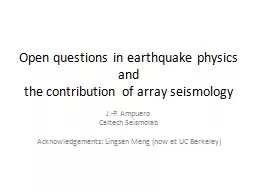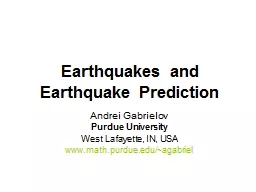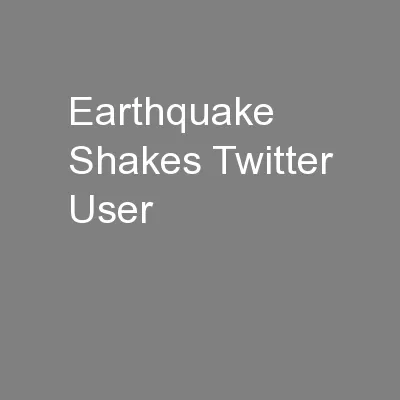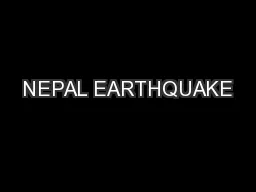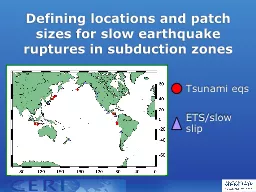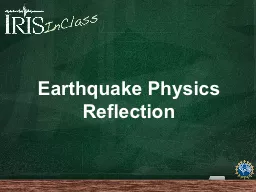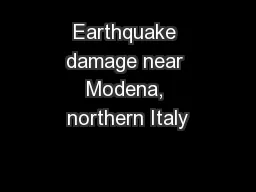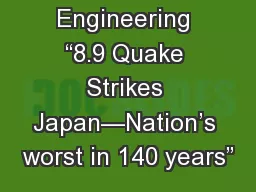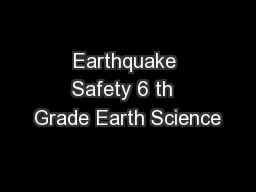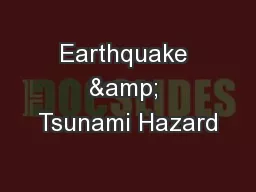PPT-Open questions in earthquake physics
Author : marina-yarberry | Published Date : 2016-07-06
and the contribution of array seismology JP Ampuero Caltech Seismolab Acknowledgements Lingsen Meng now at UC Berkeley Overview Earthquake physics how earthquakes
Presentation Embed Code
Download Presentation
Download Presentation The PPT/PDF document "Open questions in earthquake physics" is the property of its rightful owner. Permission is granted to download and print the materials on this website for personal, non-commercial use only, and to display it on your personal computer provided you do not modify the materials and that you retain all copyright notices contained in the materials. By downloading content from our website, you accept the terms of this agreement.
Open questions in earthquake physics: Transcript
Download Rules Of Document
"Open questions in earthquake physics"The content belongs to its owner. You may download and print it for personal use, without modification, and keep all copyright notices. By downloading, you agree to these terms.
Related Documents

